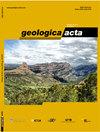伊朗石炭纪以有孔虫为基础的古地理重建及其对新特提斯开启时间的影响:综合
IF 2
4区 地球科学
Q2 GEOLOGY
引用次数: 11
摘要
有孔虫的生物地理分布及其属于古特提斯南部或北部边缘,用于石炭纪伊朗的古地理重建。伊朗北部和中部的下石炭世有孔虫组合具有世界性特征,与古特提斯南部和北部边界都有亲缘关系。因此,在石炭纪早期,伊朗占据了南纬的中间位置,形成了冈瓦纳大陆的一部分。根据古地磁资料,这一结论与伊朗晚奥陶世至早石炭世的漂移史相一致。晚石炭世,伊朗北部和中部与古特提斯北部的有孔虫亲缘关系表明,伊朗与冈瓦纳大陆分离,向北移动到较低的纬度。Sardar组的上石炭统含煤砂岩和具有高度化学风化的砂岩也证明了这种分离,这表明了温暖潮湿的条件。考虑到有孔虫动物群的组成以及伊朗西北部岩浆活动的证据,可以推断,伊朗新特提斯开放和大陆破裂的开始发生在晚石炭世,这与之前关于伊朗与冈瓦纳大陆分离发生在二叠纪和/或三叠纪的说法相矛盾。本文章由计算机程序翻译,如有差异,请以英文原文为准。
Foraminiferal-based paleobiogeographic reconstructions in the Carboniferous of Iran and its implications for the Neo-Tethys opening time: a synthesis
The biogeographic distribution of foraminifers and their belonging to either the southern or northern margins of the Paleo-Tethys are used here for paleogeographic reconstructions of Iran during the Carboniferous. Lower Carboniferous foraminiferal assemblages from northern and central Iran show a cosmopolitan character and affinities to both the southern and northern borders of the Paleo-Tethys. Hence, in the Early Carboniferous Iran occupied an intermediate southern latitude position, forming part of Gondwana. This conclusion is consistent with the Late Ordovician to Early Carboniferous drift history of Iran based on paleomagnetic data. In the Late Carboniferous, the foraminiferal affinities of northern and central Iran with the northern part of Paleo-Tethys suggest that Iran separated from Gondwana and moved northwards to a lower latitude. This separation is also evidenced by the Upper Carboniferous coal-bearing sandstones of the Sardar Formation and sandstones with high degree of chemical weathering, which would indicate warm and humid conditions. Considering the composition of foraminiferal fauna along with the evidence of magmatic activities in northwest Iran, it can be inferred that the commencement of the Neo-Tethys opening and continental break-up in Iran occurred sometime in the Late Carboniferous, which contradicts the previous claims that the separation of Iran from Gondwana occurred in Permian and/or Triassic times.
求助全文
通过发布文献求助,成功后即可免费获取论文全文。
去求助
来源期刊

Geologica Acta
地学-地质学
CiteScore
2.50
自引率
6.70%
发文量
13
审稿时长
>12 weeks
期刊介绍:
- Relevant conceptual developments in any area of the Earth Sciences.
- Studies presenting regional synthesis.
- Thematic issues or monographic volumes presenting the results from one or more research groups.
- Short papers reflecting interesting results or works in progress.
- Contributions and results from Research Projects, Workshops, Symposiums, Congresses and any relevant scientific activity related to Earth Sciences.
- Geologica Acta aims to stimulate rapid diffusion of results and efficient exchange of ideas between the widespread communities of Earth Science researchers (with special emphasis on Latinamerica, the Caribbean, Europe, the Mediterranean
 求助内容:
求助内容: 应助结果提醒方式:
应助结果提醒方式:


